I’ve traveled to Madrid several times over the last ten years. It’s one of my favorite cities in Europe, especially because of how easy it is to navigate on foot and by metro, and its glorious plazas, and architecture. Here is my list of the top things to see and do in Madrid – a bustling capital that never ceases to amaze me.
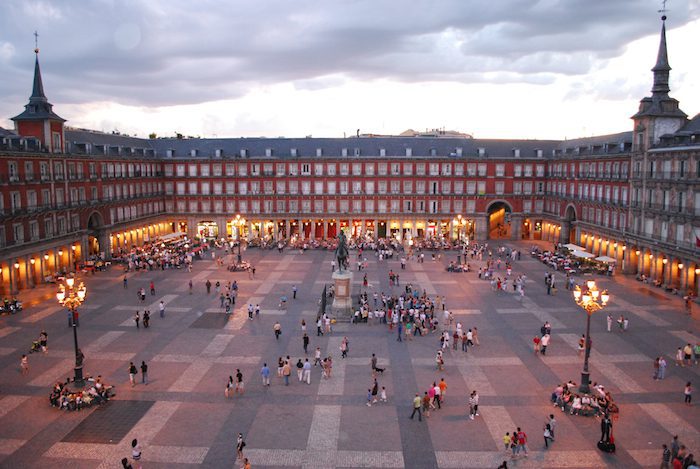
The largest city in Spain as well as the capital, Madrid is a constantly bustling city that some would even consider the Spanish equivalent to New York City. The land on which Madrid sits today has been occupied since pre-historic times.
In the ninth century, Muhammad I, a Moorish leader, ordered the construction of a small palace. Around it a small citadel was built, which was later conquered by the King of León, then again by the King of Castile. Throughout these many changes in rulers, Madrid was built up and destroyed many times, and then rebuilt once again. The hundreds of years that followed saw many wars and struggle for power, but in the end Madrid flourished into one of Europe’s most prosperous cities.
Check out our list of Must Visit Restaurants in Madrid

Today, Madrid is considered a major finance center of due to the high standard of living and vast market size. It is an expansive, multidimensional country with breathtaking landscapes and friendly people. Now, more than ever, hotel and restaurant rates are competitive, which translates into great deals for tourists.
With a population of roughly three million, Madrid still manages to be one of the “greenest” cities in Europe, with numerous parks and recreational spaces in every neighborhood.
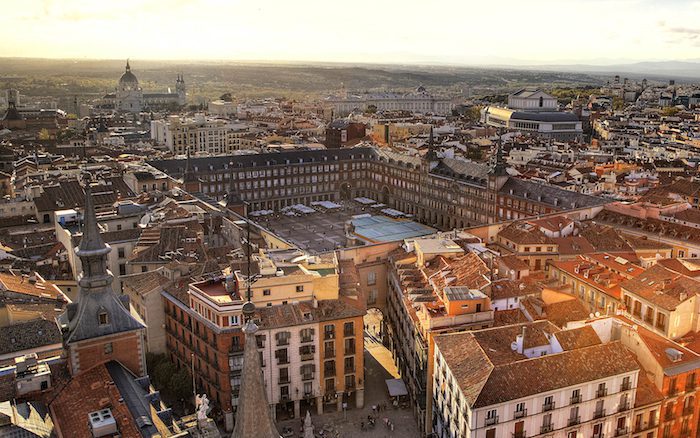
The city is comprised of 21 districts, or distritos. Within each, there are various wards, or barrios. Getting around Madrid’s neighborhoods is simple thanks to the metro (subway) system, which has over 300 stops and is about 182 miles (293 km) in length. Madrid also has an extensive network of buses, a sizeable taxi fleet and convenient suburban trains.
Also check out our list of Top Day Trips From Madrid
This handsome capital is a charming city absolutely dripping with culture. Whether you are keen on experiencing architectural wonders, world class shopping, delectable cuisine or local traditions, Madrid has something amazing in store for you!
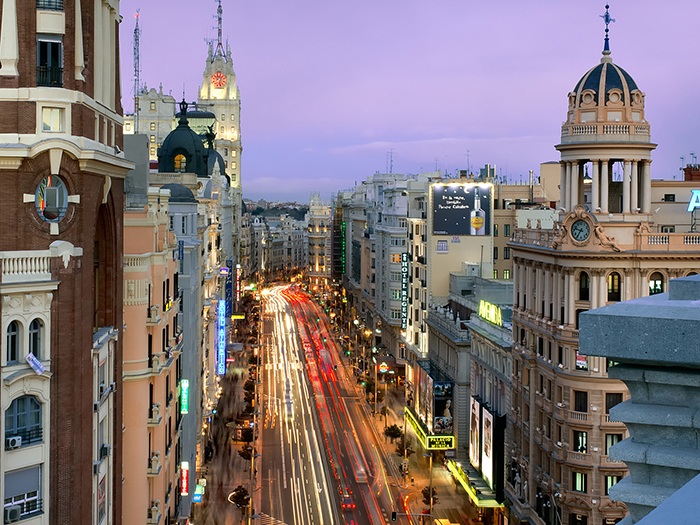
Madrid’s most famous street as well as one of our favorite streets in Europe is La Gran Vía. Considered to be the “Spanish Broadway,” it is lined with numerous theaters and cinemas and stretches from Plaza de Alcalá to Plaza de España. All along the way do not miss your chance to see all the shops, restaurants and bars located on La Gran Vía.
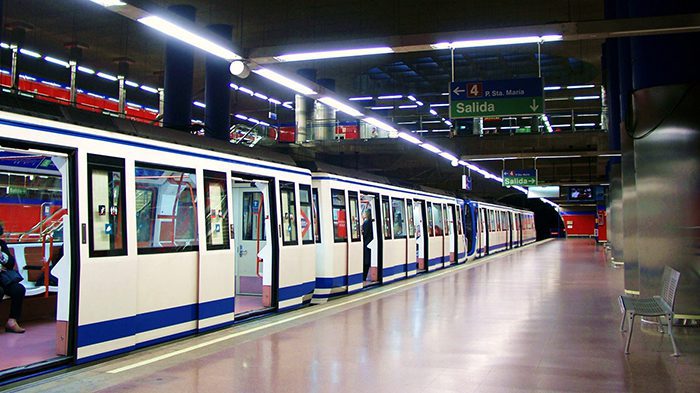
When you realize how big Spain’s capital is, you cannot help but marvel at the extensive network of subway lines that the metro offers in order for commuters to get around. The Madrid Metro system has more than 300 stops and is over 293 kilometers long (182 miles). All of Madrid’s major attractions are not far from the metro stops and can easily be accessed on foot. The engineers responsible for the planning of this impressive transportation system have been asked to serve as consultants to other European countries that strive for a public metro system as expansive as the one in Madrid.

Some of city’s metro stops have mini museums within them, in which engineers have protected ruins in order to preserve some of Spain’s rich subterranean Roman history. As with any other big city, Madrid’s metro plan may seem complicated at first, but after some familiarization with its layout you will find your way in no time. The metro is undoubtedly the cheapest and fastest way to move about the city, and it provides direct transportation to and from the airport. Children under the age of four ride for free and there are a variety of tickets available for tourists (three-, five- and seven-day passes).
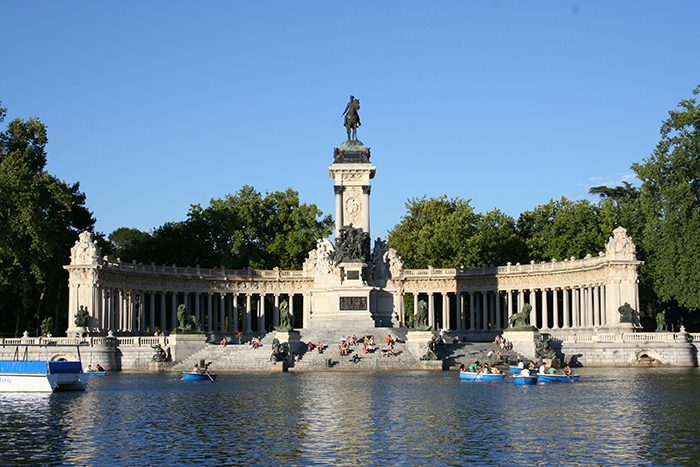
Parque del Buen Retiro, or what others simply call El Retiro, is the largest green space in Madrid and located smack dab in the center of the city. What once served as the royal family’s private garden is now the country’s most famous park. The grounds boast a man-made lake where visitors can rent paddleboats. Fountains, benches and majestic trees can be found throughout. Sundays are when the park really comes alive. With book fairs, puppet shows and all other types of events, large crowds never fail to be drawn to this majestic park.

One of the longest, widest avenues in Madrid is Paseo de la Castellana, or commonly known as La Castellana. It begins at Plaza de Colón and ends at the northern end of the city. It consists of 12 lanes and two massive sidewalks that separate the main driving lanes from the taxi and bus lanes. Walking this entire avenue would take hours and would prove to be exhausting, but we recommend you walk just a section of the vast avenue to get a feel for its size.

Located in the heart of Madrid, Plaza de Cibeles is home to the iconic Cibeles Fountain, which depicts the Greek god of fertility in a chariot holding a scepter and key while being pulled by two lions. This famous plaza was adopted by the Madrid soccer team, Real Madrid, as the unofficial spot to celebrate its victories. Whenever the team wins the Champions Cup, Cup of the King or the League Cup, you’ll likely find more than three million people here partying until the early morning hours.
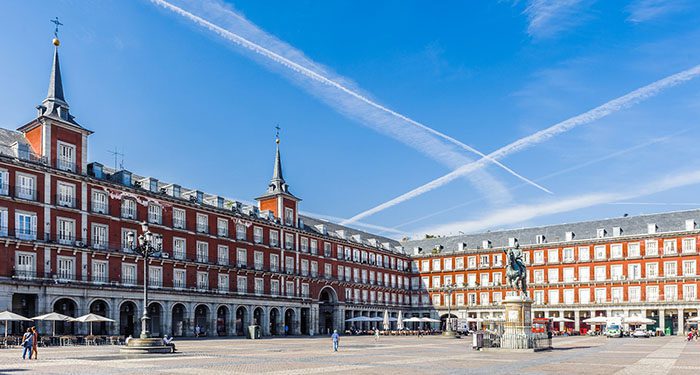
Madrid’s Plaza Mayor is only a few blocks from the Puerta de Sol and is the city’s main square. A lucky handful of people actually reside in the historical buildings lining the plaza. They get to enjoy the sight of the bustling Plaza Mayor every day. There are a variety of restaurants that allow beautiful views of the square while dining on tasty Spanish food. But be warned, the food and drink served in this area will be the most expensive in Madrid.
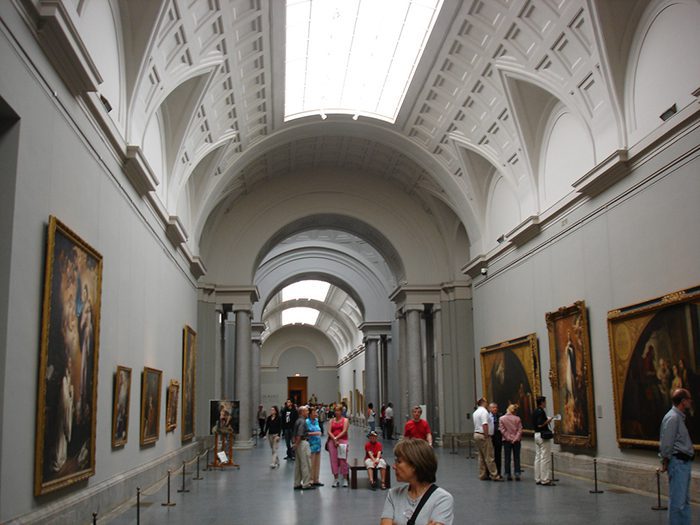
Situated along El Paseo del Prado, El Prado Museum (Calle Ruiz de Alarcón, 23) is the most famous museum in Madrid and definitely an art lover’s dream. Even if you are not a “museum person,” you just might be surprised to find works by some of Europe’s most renowned artists including Goya, El Greco and Velazquez. El Prado has an excellent collection of European art from the 12th through 19th centuries. With more than 7,600 paintings, seeing the entire museum could take a while so make sure to do some research and have in mind what you really want to see beforehand. Our favorite exhibit is Las Meninas by Velazquez. For ticket prices and hours visit www.museodelprado.es.

Built in 1766, Puerta de Alcalá, or the Alcalá Gate, currently stands in the midst of Calle de Alcalá. The gate’s original purpose was to mark the eastern limits of the city during the 18th century. Since then, of course, the city limits have expanded, but the Puerta de Alcalá still stands as a reminder of Madrid’s past.

Day or night, you’re likely to find crowds gathered at Puerta del Sol, one of the busiest, most famous squares in Madrid. Just walking distance from the Plaza Mayor, this square is considered Madrid’s most central location, marked as kilometer zero from all Spanish roads. Many different shops, restaurants and bars are located in the Puerta del Sol area, and if you’re lucky enough to be in Madrid on New Year’s Eve, Puerta del Sol is where you’ll find energetic crowds and the city’s best new year festivities.

El Rastro (Ronda de Toledo, 1) is one of Madrid’s largest open flea markets, stretching across several streets. It contains thousands of stalls and open-air antique shops where both old and new products can be purchased. It is said that there is nothing you can’t find at El Rastro. The market is only open on Sundays from 9 a.m. to 3 p.m. Come early to avoid the midday crowd.

El Palacio Real, or the Royal Palace, was built from the years 1738 to 1755. It is the largest palace in all of Western Europe with more than 2,800 rooms. Although it is no longer home to the Spanish royal family, who currently resides in a palace on the outskirts of Madrid, the Royal Palace still does contain many paintings, tapestries and ceramics crafted by various famous artists including Goya and Velazquez. Today, the Royal Palace is open to the public all year round, so be sure to check out one of Europe’s most influential museums. Here’s a tip on how to avoid the extensive lines: get there early! The Royal Palace is open every day from 10 a.m. to 6 p.m. Admission is €10 per person; €7 for a guide; and €4 for an audio guide. Visit www.patrimonionacional.es for more information.
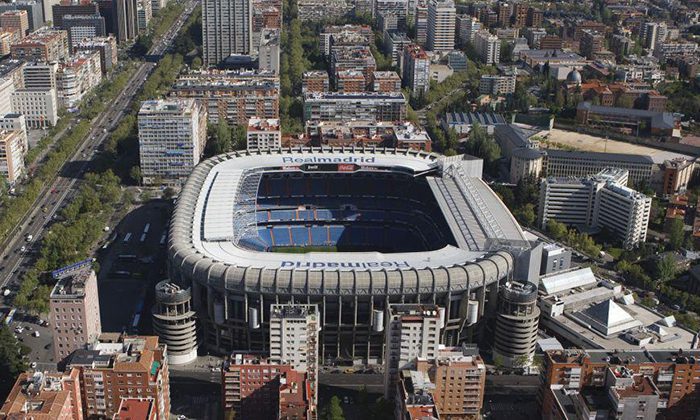
Completed on Dec. 14, 1947, the Stadium of Santiago Bernabeu, located on La Castellana, has an impressive capacity of more than 80,000 spectators. Owned by the futbol (soccer) team, Real Madrid, this stadium has seen various European as well as World Cups, and tickets to the games can be almost impossible to obtain thanks to loyal season ticket holders. It is said that in some families, season tickets are passed on from generation to generation, leaving anyone else very little opportunity to find tickets to these almost religiously attended games.

Inside this prestigious stadium is a museum that takes you through the history of the team and its most revered players. If you are lucky enough to score tickets to a game, do not pass up this once in a lifetime opportunity!
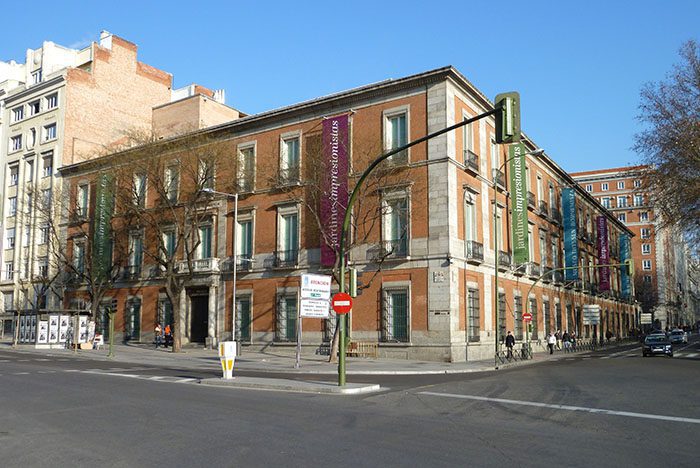
Alongside the top museums in Madrid is the Thyssen-Bornemisza Museum (Paseo del Prado, 8), another amazing artistic venue containing some of the most famous paintings in the world. What was once the second largest private collection of art in the world, the Thyssen-Bornemisza is definitely more diverse than other nearby museums because it contains works by 20th century international artists as well as paintings dating back to medieval times. Check the museum’s website for admission cost and hours of operation.
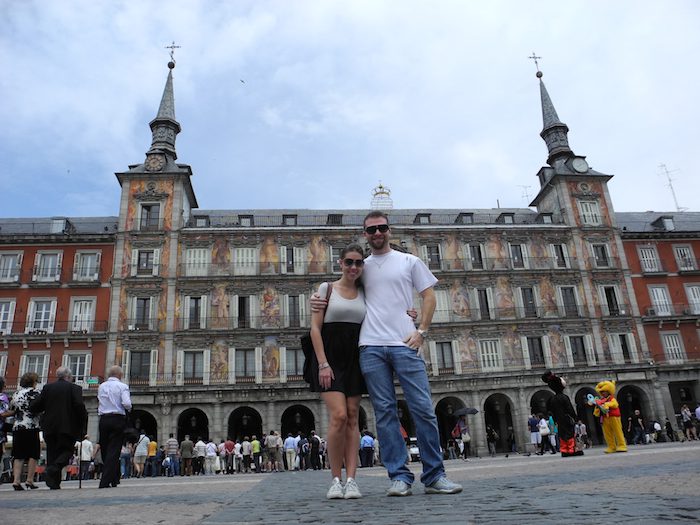
In my travels I have covered much of Spain, and after visiting most of the major cities and towns I have to say that Madrid is still my favorite city. It is a metropolis reminiscent of New York City, so large in fact, that it would take various days to explore it on foot. Fortunately, Madrid is one of the transportation-friendliest places on earth with multiple ways of getting around. Madrid is an ideal walking city, but there are many metro lines, which one could take from the airport to the center of the city. This only takes about 20 minutes and costs a mere €2! Madrid is considered by many to have the best public transportation in the world, with convenient and reliable taxi, train, bus and metro systems in place.
Overall, Madrid is my favorite city in Spain; a bustling place that I consider a second home. If you love culture, history, art and mouthwatering food, then I guarantee one visit won’t be enough to satisfy you. I find myself coming back each year, and with each visit there’s been something new to discover.
+34 913 658 446
Named the “best Tablao Flamenco in the world” by various publications including the New York Times and Michelin Guide, Corral de la Moreria is Spain’s most iconic Flamenco house. Corral de la Moreria is located near the Royal Palace and has entertained the likes of royalty from all over the world. To watch a Flamenco show here is a both a privilege and a delight. Prices are reasonable; for just €38.90 plus tax, you’ve got dinner and unforgettable entertainment. Booking online is the easiest and most convenient method to purchase tickets.
+34 914 675 062
http://museoreinasofia.mcu.es
This renovated 18th century hospital building contains some of Europe’s most important works of contemporary art. There are also exhibition halls dedicated to abstract, pop and minimal art genres. The museum’s Pièce de résistance is Pablo Picasso’s Guernica – the artist’s legendary protest against the Spanish Civil War. Other works on display include those by painters Miró and Dali, and English sculptor Henry Moore. The Reina Sofia Museum is open Monday to Saturday 10 a.m. to 9 p.m. and Sundays 10 a.m. to 2:30 p.m. Admission is €6.
+34 913 101 584
http://museosorolla.mcu.es/ (Spanish only)
Created in 1925 by the widow of the Spanish impressionist painter Joaquín Sorolla Bastida, the Sorolla Museum is dedicated to Sorolla’s work as well as art that he collected over his lifetime. Known for his delicately painted beach scenes, Sorolla’s art is a source of pride for Spain. The Sorolla Museum is one of Madrid’s lesser-known museums, but is located in Sorolla’s former home and contains a variety of stunning works. The Sorolla Museum is open Tuesday through Saturday 9:30 a.m. to 8 p.m. and Sundays 10 a.m. to 3 p.m. (closed Mondays). General admission is €3.
+34 915 411 118
www.teleferico.com/en
Since 1969, the Madrid Teleférico has been thrilling visitors of all ages. This 11-minute cable car ride from the center of the city to Casa Campo reveals birds-eye views of many of the city’s major attractions. A round-trip ticket for an adult costs €5.50.

Time zone: GMT +1
Getting around: Madrid’s metro system is efficient and can take you anywhere you want to go in and just beyond the city. If you prefer to take in sights on foot, Madrid is the perfect walking city. Be sure to respect all traffic and pedestrian crossing signals. The MadridCard provides discounted admission to over 50 of the city’s attractions including Prado Museum, Thyssen-Bornemisza Museum and the Royal Palace. A 24-hour pass is €47 per adult. Forty-eight, 72 and 120-hour passes are also available.
Currency: Euro
Currency converter: www.xe.com
Best time to go: April, May, September and October
Weather: The Community of Madrid has a temperate continental Mediterranean climate. In other words, very hot summers and cold winters. July is typically the hottest month, while January is the coldest. Since it is landlocked, Madrid has relatively low humidity levels throughout the year.
Getting there: The Community of Madrid is located in the heart of the country, with Madrid as its helm. If you are flying into Spain, you will likely arrive at Madrid-Barajas Airport, one of the world’s busiest travel hubs. Its contemporary, functional design and architectural appeal also make Madrid-Barajas one of the most stylish airports in Europe.
Where to stay: Check out my episode on my favorite hotel in the city, Hotel Meninas
Hours of operation: Generally, most businesses operate from 9 a.m. to 2 p.m. and from 5 to 8 p.m., closing for those crucial three “siesta hours.” Restaurants will typically open for lunch around 1 p.m., close at 4 p.m., and open again for dinner service from 8 p.m. to midnight. Most museums are closed on Mondays. Many businesses in Spain close for the month of August.
What are your favorite things to see and do in Madrid? Leave us a question or comment below!
Counter
101 Countries • 1432 Cities